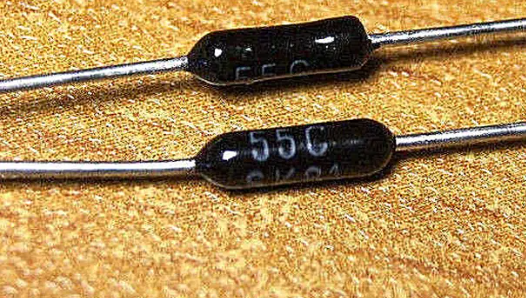What are matching resistors?What are the functions of matching resistors?
In the design and manufacturing process of electronic products, PCB (Printed Circuit Board) board design is a crucial link. In PCB board design, the use of matching resistors plays a decisive role.

So, what exactly is a matching resistor? What role does it play in PCB board design? This article will provide an in-depth analysis of the importance and specific role of matching resistors in PCB board design.
What are matching resistors?Matching resistors refer to resistors that have nearly identical electrical characteristics, including resistance values, tolerance, and temperature coefficients. These resistors are specifically chosen and paired to ensure that the electrical properties across different parts of a circuit are as uniform as possible. This matching process is critical in applications where balance, precision, and stability are essential.
What are the functions of matching resistors?
1. Impedance matching
Impedance matching is the most direct and important role of matching resistors. In circuits with high-speed signal transmission, the integrity of the signal largely depends on whether the impedance of the circuit is matched.
If the impedances of the transmitter and receiver do not match, the signal will be reflected during transmission, resulting in signal distortion or even complete loss.
By reasonably setting matching resistors in the circuit, the impedances of the transmitting end and the receiving end can be matched, thereby reducing signal reflection and distortion and ensuring signal integrity and stability.
2. Terminal matching
In addition to impedance matching, matching resistors are also commonly used for termination matching. In long-line transmission or high-speed digital signal transmission, due to the inductance and capacitance effects of the line, the signal may ring at the end of the transmission line.
By connecting a matching resistor in parallel to the ground at the end of the transmission line or connecting a matching resistor to VCC (positive power supply), the reflected signal can be effectively absorbed, the ringing phenomenon eliminated, and the signal transmission quality improved.
3. Voltage division and current limiting
In addition to the above two main matching functions, matching resistors can also play the role of voltage dividing and current limiting in the circuit.
In some situations where precise control of voltage or current is required, precise adjustment and control of voltage or current can be achieved by reasonably setting the resistance of the matching resistor.
In addition, in some situations where sensitive devices need to be protected from excessive current impacts, matching resistors can also be used as current-limiting resistors to protect the circuit.
What’s the application of matching resistors?
● Amplifier Circuits:
In amplifier circuits, matching resistors are often used in critical stages to maintain balance and symmetry. Balanced resistors help ensure that signals passing through the amplifier are accurately amplified without distortion. This is particularly important in audio applications where fidelity is a key consideration.
● Voltage Divider Networks:
In voltage divider circuits, matching resistors are employed to divide an input voltage into precise fractions. Any mismatch in resistor values can result in inaccurate voltage division, leading to errors in the output signal. Precision is crucial in applications like sensor networks and measurement devices.
● Bridge Circuits:
Wheatstone bridge circuits, commonly used in precision measurement applications, rely on the accurate matching of resistors. This ensures that the bridge is balanced, providing accurate and stable readings in applications such as strain gauge sensors and temperature sensors.
● Feedback Networks:
Matching resistors play a crucial role in feedback networks of operational amplifiers. In circuits employing negative feedback, the resistors are often matched to maintain a stable and predictable gain, contributing to the overall performance and reliability of the amplifier.
Principles for selecting matching resistorsWhen selecting matching resistors, certain principles need to be followed to ensure circuit performance and stability.
First, the resistance of the matching resistor must be determined based on the operating frequency of the circuit and the characteristic impedance of the transmission line. Secondly, the power handling capacity of the matching resistor should be considered to ensure that it will not be damaged due to overheating during operation.
In addition, factors such as the accuracy and stability of the matching resistors need to be considered to ensure that their impact on circuit performance is minimized.
在线留言询价
- 一周热料
- 紧缺物料秒杀
| 型号 | 品牌 | 询价 |
|---|---|---|
| RB751G-40T2R | ROHM Semiconductor | |
| BD71847AMWV-E2 | ROHM Semiconductor | |
| CDZVT2R20B | ROHM Semiconductor | |
| MC33074DR2G | onsemi | |
| TL431ACLPR | Texas Instruments |
| 型号 | 品牌 | 抢购 |
|---|---|---|
| TPS63050YFFR | Texas Instruments | |
| BU33JA2MNVX-CTL | ROHM Semiconductor | |
| ESR03EZPJ151 | ROHM Semiconductor | |
| STM32F429IGT6 | STMicroelectronics | |
| IPZ40N04S5L4R8ATMA1 | Infineon Technologies | |
| BP3621 | ROHM Semiconductor |
- 周排行榜
- 月排行榜
AMEYA360公众号二维码
识别二维码,即可关注
























